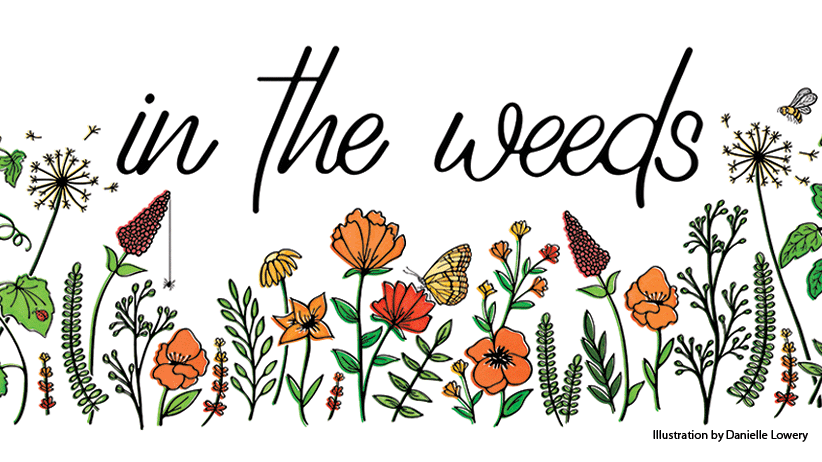Tips for harvesting vegetables
When I first started vegetable gardening, I was caught up in the process of seeing tiny seeds transform into flourishing plants. It was impossible not to feel a sense of wonder as I watched my garden produce a vibrant tapestry of fruit in shades of green, yellow and red. I waited eagerly for any sign of ripeness but sometimes harvested too early or too late, leading to less flavorful produce or, worse, waste. I wish I’d had a handy chart like the one below back then! Once you know how to recognize each crop’s subtle cues, you can pick at the perfect time to capture peak flavor and nutrition.
Learn how to pick produce at the best time
The perfect harvest window varies plant by plant. For example, root vegetables like carrots can remain in place without going past peak ripeness for a lot longer than green beans, which you probably need to check every day or two. And if you’ve ever grown zucchini, you know this all too well. I swear, they can grow a foot overnight!
Learning the signs of ripeness
Here, you’ll find the expected days to maturity if you’re starting from seeds, along with the telltale signs that indicate when your crop is under- or overripe. Whether you’re a beginner gardener wondering about the best time to harvest or an experienced one looking to refine your timing, this guide can help ensure that every vegetable you grow tastes its best. Happy harvesting!
Related Articles:
Calculate How Many Vegetables To Plant
Maximize Your Harvest with Succession Planting
Watch Our Vegetable Gardening Videos on YouTube
Helpful vegetable harvesting guide
| Plant name | Days to maturity (from germination) | Signs of ripeness | Sign of overripeness | Harvesting tips |
|---|---|---|---|---|
| Asparagus | 2-3 years | Spears are 6 to 8 inches tall and buds are still tight | Spears become woody and excessively tall | Cut or snap off spears at ground level. |
| Beans | 50-70 days | Pods are young and tender; seeds are not yet visible | Bulging; pale-colored pods | Pick and check daily to avoid letting pods become tough; cut or snap beans off the branch, being careful not to cause damage to the remaining plant. |
| Beets | 50-70 days | Foliage turns yellow and withers | Roots are cracked and have rough skin | Gently pull one or two to check ripeness; look for 1- to 3-in.-wide roots, smooth skin and firm, rounded bottoms; young leaves can be harvested for greens. |
| Broccoli | 60-80 days | The head is dark green and firm; no signs of flowering | Yellow flowers appear on head | Harvest the central head to encourage side shoots; homegrown broccoli doesn’t grow quite as large as he heads you can buy at the grocery store. |
| Cabbage | 65-70 days | The head is firm when squeezed | Leaves begin to open or crack | Cut at the base of the cabbage head with a sharp knife; tighter spacing produces smaller heads. |
| Cantaloupe | 80-90 days | Netted skin; easily removed from the vine | Surface becomes soft and mushy | Gently tug on the melon; it’s ready to harvest if it detaches easily from the vine. |
| Carrots | 50-80 days | Bright color and firm; 1- to 3-in.-wide shoulders | Carrots may crack or become woody | Pull gently to check size; in winter, mature carrots can be left in the ground and harvested as needed until the soil freezes; shoulder size depends on variety. |
| Celery | 85-120 days | Stalks are firm, green in color | Stalks become stringy and tough | Harvest stalks from the outside first by cutting at the base; water plants frequently and deeply to prevent bitterness. |
| Corn | 60-100 days | Brown silks; plump kernels | Tightly packed, starchy kernels with visible dents | Harvest in the morning for the sweetest flavor; the top kernels ripen last. |
| Cucumbers | 50-70 days | Bright green and firm; size depends on the variety | Yellow color; soft or wrinkled skin | Harvest early in the day for a crisp cucumber; pick and check crop daily since overripe cucumbers can be bitter and seedy. See different varieties to grow here. |
| Eggplant | 50-80 days | Skin is shiny and springs back when pressed | Skin turns brown and feels soft | Cut the eggplant off the stem with pruning shears, leaving a bit of the stem attached to fruit. |
| Head lettuce | 45-60 days | Heads are full-sized and firm | Head feels soft or hollow; bolting | Harvest in the morning; heat causes bolting and bitterness; cut the stem of the head about 1 inch above the soil. Leaf lettuce can be harvested at any stage and is a tasty microgreen. |
| Leaf Lettuce | 45-55 days | Leaves are crisp and brightly colored | Leaves wilt and develop a bitter taste; bolting | Cut leaves at about an inch above the soil line to allow for new growth or harvest leaves individually starting from the outer leaves. |
| Kale | 50-70 days | Leaves are green and firm | Leaves turn yellow and soft | Harvest the outer leaves first, allowing the center to continue growing. |
| Radishes (spring) | 25-30 days | Tops of radishes are visible; roots are bright in color and firm | Roots become soft and pithy; bolting | Pull one out of the ground to test readiness; green tops are also edible. |
| Onions | 100-120 days | Tops fall over and begin to brown | Bulbs are soft or have a flower stem | Cure onions in a warm, dry, ventilated area for two weeks before removing dried tops and storing. |
| Peas | 60-70 days | Peas are plump and touching; firm, bright green glossy pods | Pods are dull in color and thin; peas are starchy and firm | Check and pick daily; overripe peas can be saved for next year’s planting; snap peas should be harvested when young and pods are flat. |
| Peppers | 60-90 days | Full sized | Wrinkles and soft spots | Regardless of color, pick sweet peppers when full sized and let them ripen off the plant; leave hot peppers on the plant until they are uniform in color. |
| Potatoes | 90-120 days | Foliage dies back or is yellow; potatoes are firm | Soft or mushy potatoes; wrinkled skin | You can gently harvest a few new potatoes two weeks after plants flower, then push the soil back in place to allow the rest to grow to full size. |
| Spinach | 40-60 days | Tender leaves can be harvested at any stage | Yellow leaves; bolting | Harvest outer leaves first; spinach can quickly bolt in warm weather; seedlings are tasty as microgreens. |
| Summer squash | 50-70 days | Firm, bright and tender skin | Dull color; hard skin; oversized | Summer squash, including zucchini, should be harvested when small and tender; twist and pull from the vine or cut it off with pruners at the base. |
| Tomatoes | 60-80 days | Rich, uniform color | Soft spots; wrinkled or splitting skin | At the end of the season, pick any fruit that’s close to full size and let it continue to ripen indoors. |
| Watermelons | 70-100 days | Curly tendril where fruit connects to the vine is dry; fragrant at blossom end | Dull thud or no sound when thumped; strong, fermented smell | A ripe melon will also have yellow spot on the bottom known as a “field spot” and a deep, hollow sound when thumped. |
| Winter Squash | 80-120 days | Hard skin; deep solid color | Skin cracks or becomes soft | Cut from the vine with pruning shears, leaving a few inches of the stem attached. |
Related Articles:
Front Yard Vegetable Garden Plan
Different Types of Cucumbers
Plant These Vegetables in Summer for a Fall Harvest

















